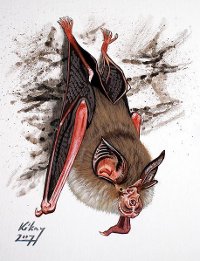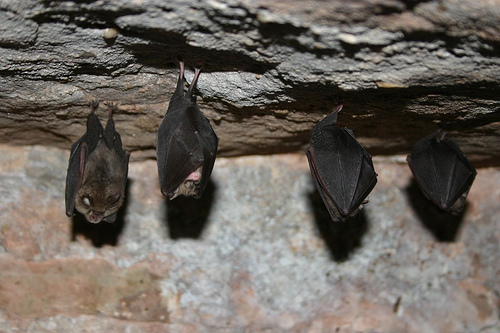|
The Horseshoe Bat (Rhinolophus spp)
There are 69 different types of horseshoe bat and they can be found in Australia, Africa, Europe and in parts of Asia. They get their curious name from the shape of the nose-leaf that surrounds their nostrils. It gives them a very distinctive appearance as can be seen in this painting by Kókay Szabolcs. In common with other insect-eating bats, they echolocate. But unlike their counterparts, they emit their high frequency calls through their noses instead of their mouths. If you want to hear what this sounds like, there's a short sound clip on the bat detector page. Their nose-leafs play a role in making sure their echolocation is directed more accurately. So what kinds of insects do they like? Well Greater horseshoe bats, which are found in south-west England and the south of Wales, amongst other places, have a preference for beetles and cockchafers. Their smaller relatives, the Rhinolophus hipposideros are also present in Europe, in places such as the beautiful National Park Krka in Croatia. They feed on moths and spiders as well as other insects. This species can grow to be about 4.5 cm (just under 2 inches) in length.
Member of the Rhinolophus genus have varied habitats but most have one thing in common. And that's some of their favourite places to roost in are caves and old, abandoned mines. The Greater's habit of roosting in exposed areas in caves has made it able to study this species extensively. Sadly, in Britain, records show that its population has decreased by over 90% in the last 3 to 4 decades. Return from The Horseshoe Bat to Chiroptera - The Order of Bats
|







